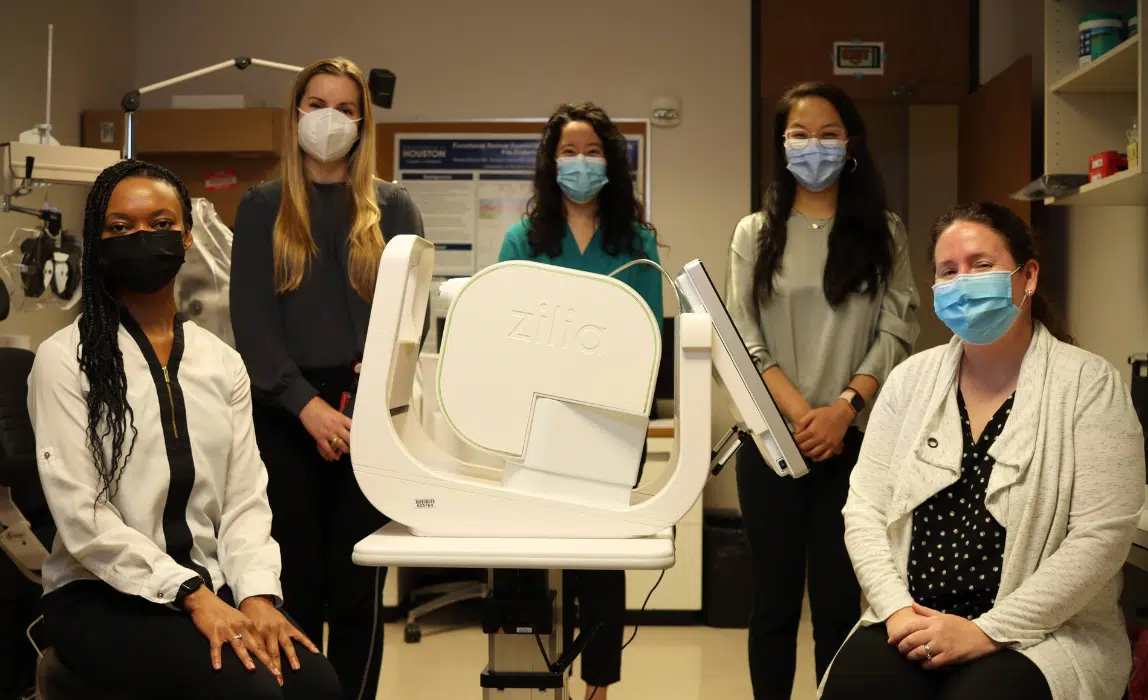University of Houston Presents First Abstract on Ocular Oximetry in Type 2 Diabetes Using the Zilia Ocular

Diabetes is projected to affect 640 million adults worldwide by 2040. Diabetic retinopathy (DR), a retinal disease affecting 1 in 3 diabetics and representing the leading cause of vision loss in adults of working age, is the most common complication from diabetes (1). While timely detection and treatment of DR may reduce severe visual loss by 90%, healthcare providers still lack robust screening tools enabling early intervention (2).
At the Association for Research in Vision and Ophthalmology 2022 Annual Meeting (ARVO) held in Denver, a team of researchers from the University of Houston College of Optometry presented preliminary findings on ocular oximetry levels in subjects with type 2 diabetes (DM) who had not yet developed retinopathy. This is the first study published linking oximetry as measured using the Zilia Ocular to DM.
In an abstract titled “Local Macular Retinal Oximetry Increases with Disease Duration in Type 2 Diabetes without Retinopathy”, the team led by Dr. Wendy Harrison, OD, PhD, presented preliminary data that suggest that ocular oximetry could be an important biomarker of early disease changes in the retina.
We hope to build on this new insight to detect metabolic changes earlier and help prevent vision-threatening diseases such as diabetic retinopathy
Dr. Wendy Harrison, OD
Using the Zilia Ocular platform technology, the researchers measured oxygen saturation within the macula in 36 subjects, 19 of which were controls and the remaining 17 had DM with no retinopathy. The findings suggest that “retinal tissue oximetry appears to be correlated to duration of disease in subjects with DM without retinopathy”. This conclusion aligns with previous studies that have shown that the duration of diabetes is an important risk factor for the development of retinopathy.
“We were able to measure, for the first time, oxygen saturation levels in the retinal tissue in DM patients. We hope to build on this new insight to detect metabolic changes earlier and help prevent vision-threatening diseases such as diabetic retinopathy”, said Dr. Harrison.
The findings were presented as a virtual poster during ARVO by Dr. Jennyffer Smith, OD, MBA.
References
(1) Wong TY, Sabanayagam C. Strategies to Tackle the Global Burden of Diabetic Retinopathy: From Epidemiology to Artificial Intelligence. Ophthalmologica. 2020;243(1):9-20. doi:10.1159/000502387
(2) Vashist P, Singh S, Gupta N, Saxena R. Role of early screening for diabetic retinopathy in patients with diabetes mellitus: an overview. Indian J Community Med. 2011;36(4):247-252. doi:10.4103/0970-0218.91324
Written by the Zilia Team on July 18, 2022
More on our Blog
Zilia Partners with Kagawa University for Groundbreaking Retinal Oxygenation Study in Japan
Quebec City, Apr. 30, 2024 - Zilia, a pioneer in non-invasive ocular biomarker technologies, announces a...
Oxygen’s Complex Role in Retinopathy of Prematurity
Premature birth is a remarkable feat of medicine. However, this early entrance into the world can sometimes...
Oxidative Stress and Eye Health
Oxygen plays an important role in our universe, being the third most abundant element and the second most...
Solutions


